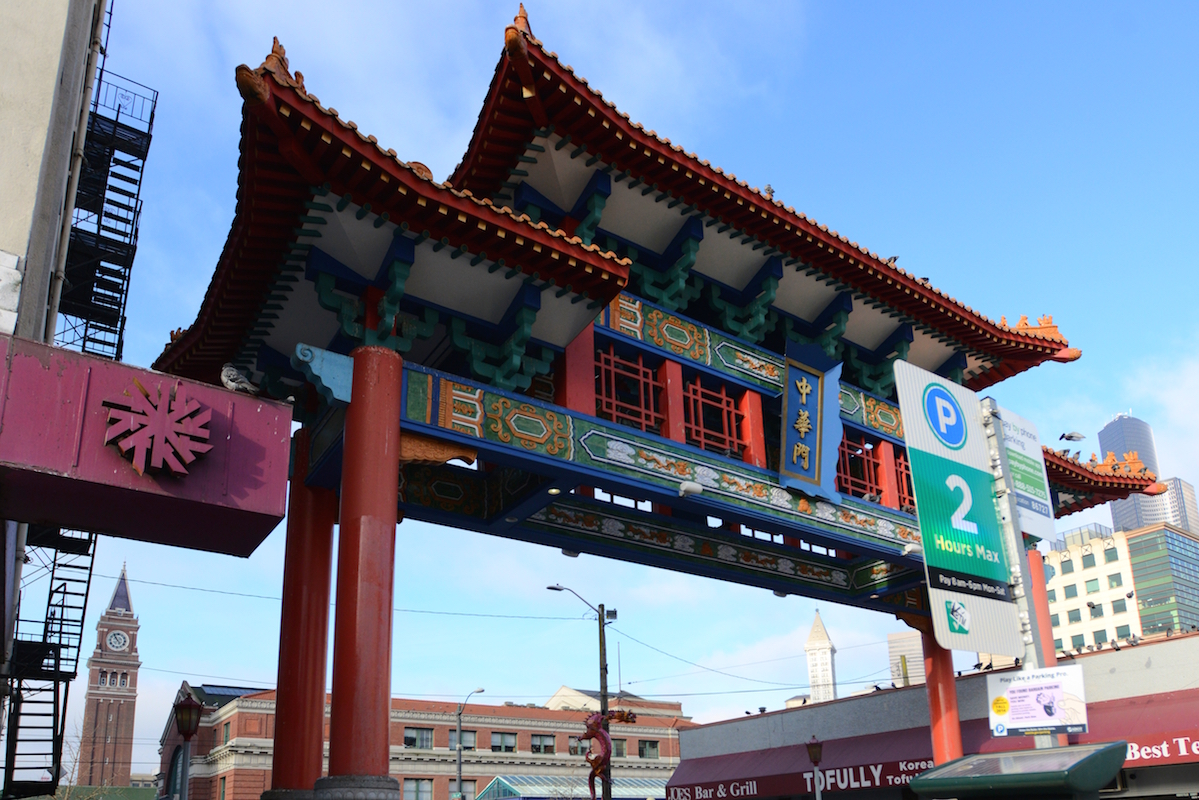
A packed house of Chinatown/International District residents peppered questions at five Seattle City Councilmembers at a forum on proposed changes to the neighborhood.
Would 6,000 units of proposed affordable housing be enough? How would they be provided? How exactly will the city mitigate displacement?
Dorothy Wong, chairperson of the Asian Pacific Directors Coalition, pointed out all the questions were connected.
“What the common thread throughout all this, is the lack of listening to the community voice. Whose voice are you listening to?” she asked council members Rob Johnson, Lisa Herbold, Mike O’Brien, Lorena Gonzalez.
Last week’s Town Hall organized by Interim CDA was meant to present concerns about development in the neighborhood and the proposed Mandatory Housing Affordability program, which could increase the number of affordable housing units as it also raises building heights in portions of the Chinatown/International District.
But speakers raised questions about how much city officials had considered the concerns and desires of the existing community.
“My preschoolers and high schoolers want grass to run on. My elders want green space. They want everything except for these high rises,” said Vic Vong, a community organizer and founder of Humbows not Hotels, which campaigns against a proposed 14-story Marriott Hotel.
“I don’t want to sit at meetings with developers for high rises who say they are going to put on ‘Asian-looking Buildings’ to make up for displacing Asian people,” she said.
The program aims to create 6,200 affordable housing units with rent control to be built in the city over the next 20 years to accommodate low-income individuals and families. The program would require market-rate developers to either pay into a fund that would be used to finance affordable publicly-built housing, or the developers could include a certain number of affordable, rent-controlled units into their market-rate buildings.
City officials told the audience there would be no major zoning changes and the proposed affordable housing would not be permitted in the historic core of the Chinatown/International District neighborhood. But if the zoning is approved, buildings outside that historic core would be allowed to be up to 170-feet tall.
Neighborhood activists say there’s a history of development and change thrust on the Chinatown/International District without outreach to the people who live and work there.
Speakers on Tuesday mentioned the Kingdome, the Holly Park street car, the Light rail stations and most recently the Navigation Center in Little Saigon as examples of how city officials have not done due diligence in making sure communities are properly informed, engaged and heard.
Community members asked why neighborhoods of color are left out of decision making and outreach processes, especially when racial equity plays a big part of housing, affordability, and development issues.
“I do not understand how the city passed a resolution expressing regret for the historical racism against the ancestors of this community [and] continues to alienate Chinatown International District,” said Jacqueline Wu, the president of OCA Asian Pacific Islander Advocates. “We ask that there be a pause to end development in the CID for the city to properly engage…so we can reach an outcome that is mutually agreeable.”
Others agreed that the city needs to address affordability and at the same time ensure that existing residents can still call the neighborhood home, with its sense of place and history.
One community member expressed that sentiment in song with a guitar: “We shall not be moved, CID, Little Saigon shall not be moved.”
People in the crowd joined the singer with their voices and clapping.

